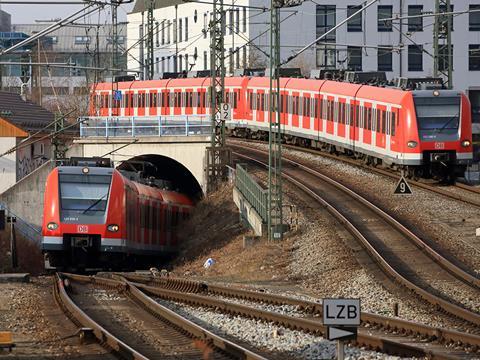
GERMANY: Bayern railway authority BEG set out details of a three-phase plan to tender the operation of München S-Bahn services on February 3.
The strategy is designed to reflect the need to manage major investment projects over the next decade, as well as the scale and complexity of the 434 km network, which carries 840 000 passengers/day and combines a core route with a peak service of 30 trains/direction/h with single-track branches and tracks shared by other operators.
BEG has decided that when DB Regio’s current operating contract ends in December 2017 it will be replaced with a two-year transitional agreement, which is seen as the only option because the existing fleet of around 250 EMUs belongs to the incumbent.
BEG then intendeds to award a competitively-tendered single contract to operate the entire S-Bahn network, which would run for approximately 12 years from December 2019. This contract would be designed to provide ‘operational stability’ during the expansion of services from 20 million to 26 million train-km/year following the commissioning of the planned second city-centre line in 2025 and the entry into service of a new fleet of trains.
It is envisaged that completion of the second route would enable operation of the network after 2032 to be tendered as several lots, with each contract running for around 12 years. Division into lots is intended to make the services more attractive to potential bidders, increasing competition.
BEG envisages that S-Bahn services will continue to require public subsidy, and has opted for a contract model which would see the operator paid a basic fee with a bonus and penalty regime based on factors including ridership growth, performance and cleanliness. This would be designed to reduce the operator's exposure to the revenue risks associated with the future changes to services, while ensuing BEG will benefit from the ‘almost inevitable’ increase in ridership as the network expands and road congestion increases.








































